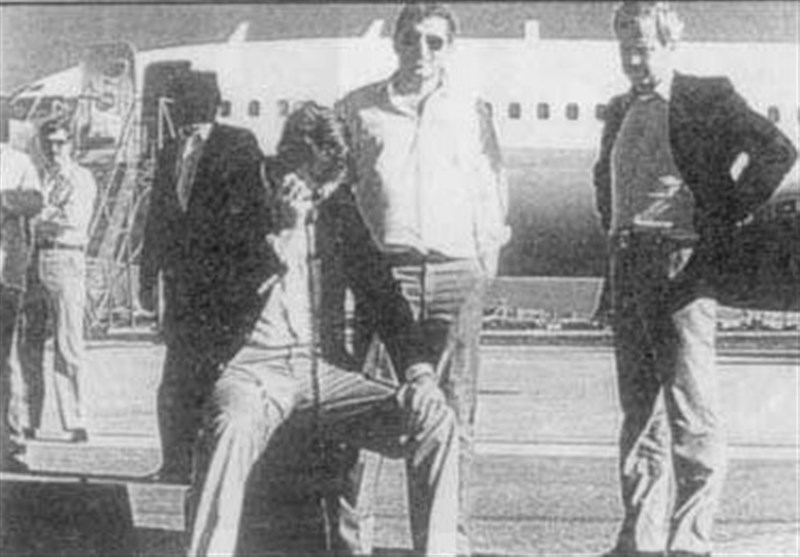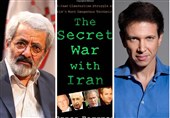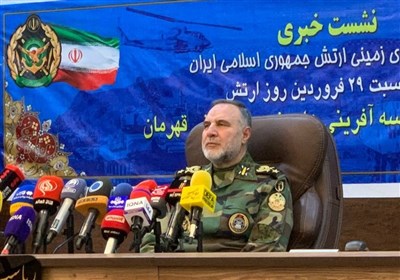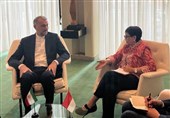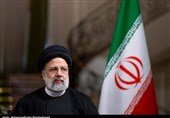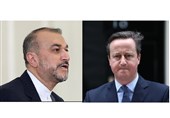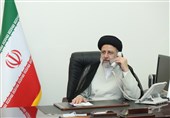An Argument against Ronen Bergman’s 'The Secret War with Iran' – 33
TEHRAN (Tasnim) – Conflicting accounts exist about whether or not the McFarlane issue is among untold stories related to the Iraqi imposed war on Iran. Some maintain that the entire Islamic establishment was involved while some others believe that it had been done in parallel with state affairs.
Iranian journalist and expert Abbas Salimi Namin has disproved the claims and opinions of Israeli analyst Ronen Bergman in the book ‘The Secret War with Iran’. ‘The Secret War with Iran’, written by renowned Zionist journalist Ronen Bergman, was published in 2008 by Simon & Schuster publishing company in the United States.
Born in 1972, Bergman is a graduate of Tel Aviv University in the Middle East political relations. He is a famous Zionist journalist and analyst in the military and security fields who has worked with Israeli newspapers ‘Haaretz’ and ‘Yedioth Ahronoth’, American dailies and weeklies such as ‘The New York Times’, ‘Newsweek’, ‘The Wall street Journal’, and British media groups including ‘The Guardian’ and ‘The Times’.
Bergman has been interested in topics relating to the enemies of the Zionist regime (particularly Iran, Hezbollah and the Palestinian resistance groups), as well as subjects on the history of the Israeli regime’s assassination operations, which are cited in his recent book ‘Rise and Kill First’.
In an interview with Persian TV channel ‘Iran International’, Bergman has pointed to the Iranian nuclear program and the issues surrounding it -particularly the Zionist regime’s secret attempts to halt the process of nuclear activities in Iran and assassinate Iranian scientists. He has also cited ex-CIA chief Michael Hayden as saying that the assassination of nuclear scientists is the best way to impede Iran’s growing process in that field, and has implicitly held Israel responsible for it.
In the book ‘The Secret War with Iran’, Bergman has written a history of encounters between Iran and the Zionist regime, while the bulk of the book relates to the Lebanese Hezbollah -Iran’s main ally in the battle against the Zionist regime since its formation until the 33-day War- focusing on the role of Martyr Imad Mughniyeh.
His book also includes sections about the final years of the Pahlavi regime and victory of the Islamic Revolution in Iran, short periods of the war imposed by the Ba’thist party of Iraq on Iran (focusing on the McFarlane affair), Iran’s role in supporting the Palestinian groups, and the Iranian nuclear program.
Bergman’s multiple undocumented and untrue comments as well as personal and purposeful analyses (with the main purpose of displaying Israel’s power, especially in a competition with the US) that have repeatedly come in his book make a critical review of the book necessary for Iranian readers.
Director of the Iran History Studies and Compilation Bureau, Abbas Salimi Namin, has written an extensive criticism in a book about ‘The Secret War with Iran’. Born in 1954, Salimi Namin is an experienced journalist and a renowned Iranian researcher in history and political sciences who has published many articles and books.
About ‘The Secret War with Iran’
Part 33:
Such remarks show that widespread and all-inclusive efforts have got under way to cover up the aspects of tactics and methods developed to trap nations. Bergman did not intend to make revelations on the behind-the-scenes of the opposing party. Bergman’s analysis of domestic issues of Iran during that specific period is poor due to his superficial knowledge of Iran’s politics or mere reliance on the propaganda scenarios developed by supporters of Ayatollah Montazeri’s office, based overseas. To deal with this issue from two various angles, developments inside Iran should be also considered. The author here has an introduction about the tendency of various politico-ideological groups following the Islamic Revolution in Iran, asserting that a current led by Mr. Hashemi Rafsanjani did attach more importance to national interests while the current led by Ayatollah Montazeri saw Iran’s revolution only as the first step for establishment of a pan-Islamic government. Based on this introduction, Mr. Hashemi Rafsanjani finally got the upper hand and arranged for McFarlane’s visit to Iran. “Rafsanjani was elected president in 1989, after running against Ayatollah Hossein Montazeri. Khomeini had made Montazeri responsible for spreading the revolution to other Muslim states, and in 1985 he had declared Montazeri his successor. The more that Montazeri and his staff occupied themselves with forming ties with subversive Islamic movements, from Afghanistan to North Africa, and the deeper Iran’s involvement in Lebanon became, the more the tension between the two parallel systems came to the fore. The clash was partly a matter of ideology, partly of ego.” (Chapter 8, p. 145)
This wrong narrative can by no means help offer a correct analysis of the issue and rather it will further frustrate readers because: 1. Mr. Rafsanjani had nothing to do with Mr. Montazeri’s dismissal as successor-in-waiting to Supreme Leader and he was even opposed to it; 2. Imam Khomeini had never appointed Mr. Montazeri as head of liberation movements and had not intervened in his nomination as successor-in-waiting and based on various accounts he was even opposed to such decision by the Assembly of Experts; 3. Mr. Rafsanjani’s main issue over talks with the US was with Imam Khomeini and not Ayatollah Montazeri because Montazeri was not informed of McFarlane’s visit even when his plane touched down in Tehran and it was Imam Khomeini who opposed Mr. Rafsanjani’s meeting with the then US National Security Adviser; 4. A faction within Ayatollah Montazeri’s office had friendly ties with Qorbanifar. Therefore when Israel was set aside during the second round of secret talks following the failure of McFarlane’s visit, Ayatollah Montazeri received some information which leaked out to anti-Iranian ash-Shara newspaper and US political machinations hit dead-end.
Therefore, the author’s information about factions in Iran is distorted and we have to briefly review it.
Conflicting accounts exist about whether or not the McFarlane issue is among untold stories related to the Iraqi imposed war on Iran. Some pundits maintain that the entire Islamic establishment was involved while some others believe that it had been in done in parallel with state affairs. As noted, comments about the McFarlane issue are just based on interpretations and analysis. Generally speaking, to get closer to reality, all measures related to the Americans are divided into four separate parts: 1. Purchase of US-made military equipment on the black market through international dealers; 2. Indirect talks with the Americans on arms supply in return for assistance in securing the release of US hostages held in Lebanon; 3. Reaching understanding with the US to end the war through political talks; and 4. Making efforts to normalize ties between the two nations.
There is evidence indicating that all state officials were aware of the details of the first two cases. But there are disputing accounts about whether or not the other two issues had been arranged with state officials.
Then Prime Minister Mir-Hossein Mousavi’s letter to Imam Khomeini, complaining that he had not been told about McFarlane’s visit, shows the then head of state was not aware of that issue and in view of his political stances at that time, he had not been informed of any normalization plan. The then president, who was constitutionally tasked with making arrangements between branches of government, was not informed of these two issues either. Nor was the then head of Supreme Judicial Council because he was not sensitive to such issues and only heard what was discussed in the meetings between heads of branches of government.
Before discussing the possibilities related to whether or not the Imam was aware of all that, we have to note that on the two disputed issues, some politicians in Iran and the US had certain motivations and tendencies. By that time, the Americans were worried about the impacts of the Islamic Revolution on the region and were trying to reduce any serious confrontation with it. In their imagination, the Imam’s sickness and the future of Iran’s leadership offered a good chance to make an assessment of various factions within the Islamic Revolution to get closer to those who shared views with the Americans in a bid to affect the trend of the Islamic Revolution. That the Americans insist on dispatching a high-ranking delegation to Tehran under the pretext of supplying Iran’s arms needs could have nothing to do with the issue of their hostages in Lebanon. “Mr. Kangarlu came and reported on the talks with the Americans. They had not given any significant information and had asked for a secret visit to Iran to examine our military needs. I said they should give us 100 Phoenix missiles in return for our help in releasing their hostages in Lebanon.” (Hashemi Rafsanjani’s Memoirs, Islamic Teachings Publication, 2008, p. 435)
Talks aimed at the release of hostages could have been held more effectively outside borders and there was no need for traveling to Iran. Therefore, the US’s insistence on sending a delegation to Iran indicates its frustration as the Islamic Revolution had presented Washington as the main enemy of nations, which strengthened opposition to US hegemony on a daily basis. For the White House, any changes in such tough conditions would be possible only by changes in Iran’s stance.
A son of Mr. Rafsanjani has authored a book on the McFarlane story. Although he tries to ignore or downplay the Americans’ strong motivation, he has had to note it in some passages: “American sources, like the Tower Report, have sought to highlight a more significant motivation about the decision of a faction within the US administration in arms sales to Iran. These sources have spoken about the strategic significance of Iran and the necessity of communications with it to block USSR influence in the region and the ineffectiveness of US hostile policies vis-� -vis this country.” (The Story of McFarlane, Mohsen Hashemi, Habibollah Hamidi, p. 32)
Regarding the Americans’ view of future Iran, it is put as follows: “Based on information relying on the possibility of the death of the Leader of Revolution, Imam Khomeini, it was assumed that Iran would soon slip into a period of instability, which for the Americans would mean a chance for the Soviet Union to take advantage of the situation. It was such that the Americans had discussed the necessity of strategic shift in policy vis-� -vis Iran in a bid to prevent a partitioning of Iran. Graham Fuller, US National Intelligence Officer for Near East and South Asia, said in a 50-page report to William Casey, then director general of the CIA: ‘The US is faced with unfavorable conditions regarding adoption of a new policy line towards Iran. The trend of events is largely against our interests and we will soon see rivalry for succession to (Imam) Khomeini. The US has no card to play.” (Ibid, p. 33)
A review of what is presented as details of US delegates’ negotiations in Tehran shows that the Americans’ objective went beyond the release of their hostages in Lebanon.
“Date: May 25, 1986 Place: Tehran, Iran, Esteghlal Hotel Time: 17:15. The Iranian official inaugurates the meeting and introduces his colleagues. He says the main idea behind the meeting is to make arrangements for negotiations about other issues. On behalf of the US president, McFarlane expresses happiness with his presence in Iran, hoping for continued talks. He highlights the responsibility of both nations vis-� -vis the USSR and what is important for US security interests in other parts of the world. Referring to Iran-US ties over the past 10 years, he expresses hope that the new round of talks would make clear that the US has no plans to affect the Iranian revolution. He said despite eight years of dispute, the US recognizes Iran as an independent power that must be dealt with based on mutual respect. Therefore, he said, before the start of high-level talks, the issue of hostage-taking (at the US embassy in Tehran) is considered as something of the past.” (Ibid, p. 125)
